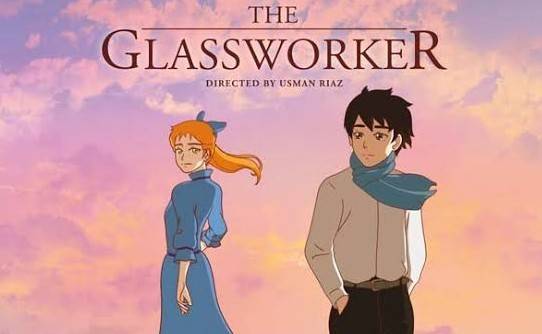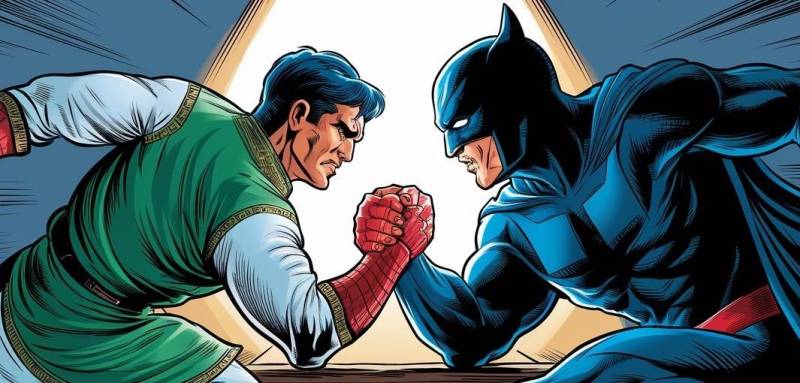By Aatif Rasheed
The Grapple
In the world of cinema, few industries can rival the global recognition and influence of Hollywood, Bollywood, and European cinema. However, Pakistani cinema has been quietly building a reputation for itself, churning out films that not only captivate local audiences
but also gain international attention. As the industry continues to evolve, it's essential to compare and contrast Pakistani cinema with its global counterparts.
The Rise and Fall of Hollywood
Hollywood, the epicenter of global cinema, has been a dominant force for decades. Its early days were marked by the rise of silent films, followed by the introduction of sound in the 1920s. The Golden Age of Hollywood (1930s-1960s) saw the emergence of iconic studios
like MGM, Paramount, and Warner Bros., producing classics like "Casablanca" (1942) and
"The Godfather" (1972). However, the industry faced decline in the 1980s and 1990s due to factors like the rise of television and home video. The resurgence of Hollywood in the 2000s saw the emergence of blockbuster franchises like Marvel's Cinematic Universe and Star Wars.
British Cinema: From Classic to Contemporary
British cinema has a rich history dating back to the early 20th century. The British New Wave movement of the 1960s saw directors like Tony Richardson and Ken Loach produce gritty, realistic films like "A Taste of Honey" (1961) and "Poor Cow" (1967). The 1980s saw
the rise of British comedy, with films like "Monty Python and the Holy Grail" (1975). In
recent years, British cinema has continued to produce critically acclaimed films like "The King's Speech" (2010) and "The Favourite" (2018).
French Cinema: A Legacy of Artistic Expression
French cinema has a long tradition of producing visually stunning, artistically driven films. The French New Wave movement of the 1960s introduced directors like Jean-Luc Godard
and François Truffaut, who created groundbreaking films like "Breathless" (1960) and
"Jules and Jim" (1962). French cinema has continued to produce iconic films like "Amélie" (2001) and "The Artist" (2011), earning widespread critical acclaim.
Iranian Cinema: A Story of Perseverance
Iranian cinema has faced numerous challenges since its inception in the 1920s. Despite censorship laws and restrictions, Iranian filmmakers have continued to produce powerful, thought-provoking films. Directors like Abbas Kiarostami and Jafar Panahi have gained
international recognition for their work, including "Close-Up" (1990) and "Taxi" (2015).
Iranian cinema has also produced films like "A Separation" (2011), which won the Academy Award for Best Foreign Language Film.
Turkish Cinema: A Rising Star
Turkish cinema has experienced a resurgence in recent years, producing films that blend cultural heritage with modern themes. Directors like Nuri Bilge Ceylan and Fatih Akin have gained international recognition for their work on films like "Climates" (2006) and "Head-
On" (2004). Turkish cinema has also produced critically acclaimed films like "Once Upon a
Time in Anatolia" (2011) and "Mustang" (2015).
Bollywood: A Global Phenomenon
Bollywood, India's Hindi-language film industry, is a global phenomenon with a massive following. With over 1,000 films produced annually, Bollywood has become synonymous with song-and-dance numbers, elaborate sets, and melodramatic storylines. Films like
"Sholay" (1975) and "Lagaan" (2001) have gained international recognition, while modern
blockbusters like "Dilwale Dulhania Le Jayenge" (1995) continue to captivate audiences worldwide.
Pakistani Cinema: A Quiet Rise
Pakistani cinema has faced numerous challenges since its inception in the 1940s. Despite these obstacles, Pakistani filmmakers have continued to produce high-quality films that resonate with local audiences. The industry has seen a resurgence in recent years, with
films like "Khuda Ke Liye" (2007), "Bol" (2011), "Waar" (2013) and “The legend of Maula Jatt” (2022) gaining international recognition.
Exchanging Content with Chinese Cinema
China's rapidly growing film industry offers an exciting opportunity for Pakistani filmmakers to collaborate and exchange content. With China becoming a major player in global cinema, Pakistani filmmakers can tap into this market by co-producing films like
“Batie Girl” was produced in 2019, directed by Yang Jin or adapting Chinese stories for
local audiences. This exchange can help create new narratives, characters, and styles that cater to both Pakistani and Chinese tastes.
Contribution of Pakistani Animation Industry and First Ever Hand-Drawn Animation:

A New Era
In a significant development for Pakistani cinema, the country is set to release its first ever hand-drawn animation film, "The Glass Worker". This groundbreaking film marks a new era for Pakistani animation, showcasing the country's capabilities in this genre. As Pakistani cinema continues to evolve, it's essential to explore new formats like animation to attract diverse audiences.
In conclusion, Pakistani cinema may not be as old or as established as some of its global
counterparts, but it has carved out its own niche by producing unique stories that resonate with local audiences. As the industry continues to grow and evolve, it's essential for Pakistani filmmakers to learn from their global peers while also exploring new formats like animation to create content that appeals to diverse audiences worldwide.



